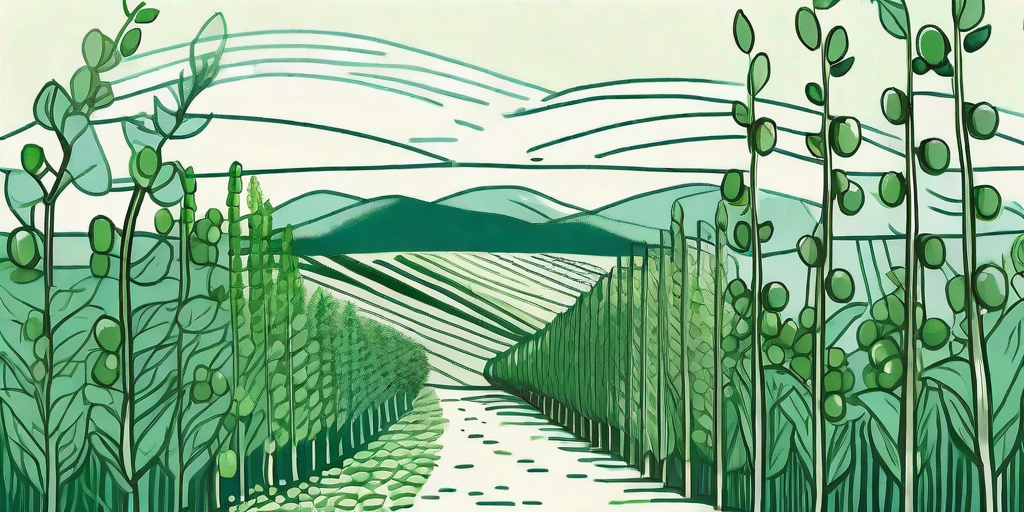
Peas, glorious peas! These little green gems are not just a staple in our meals, but also a delight in our gardens. And when it comes to peas, the Oregon Sugar Pod variety is the crème de la crème. These peas are sweet, crunchy, and perfect for adding a bit of green to your garden and your plate. But how do you grow and harvest these delightful legumes? Well, dear reader, buckle up because we're about to embark on a pea-spectacular journey.
Understanding the Oregon Sugar Pod Pea
Before we dive into the nitty-gritty of planting and harvesting, let's first get to know our star of the show, the Oregon Sugar Pod Pea. This variety is a type of snow pea, which means the entire pod is edible. They're known for their sweet flavor and crisp texture, making them a favorite for stir-fries and salads.
Originally developed in the cool climates of Oregon, these peas are hardy and can withstand a bit of frost. They're also resistant to many common pea diseases, making them a great choice for novice gardeners. But don't let their rugged exterior fool you, these peas are as sweet as they come.
The Anatomy of a Pea Plant
Pea plants are climbing plants, which means they love to reach for the sky. They have tendrils that they use to cling onto supports, so make sure you have something for your peas to climb on. The flowers of the Oregon Sugar Pod are white and quite pretty, adding a touch of beauty to your vegetable garden.
The pods are flat and wide, with small peas inside. When the peas are young, the pods are tender and sweet. As they mature, the peas inside grow larger and the pods become tougher. But don't worry, we'll guide you on when to harvest for the sweetest peas.
Planting Your Peas
Now that we're acquainted with our pea pals, let's get them in the ground. Planting peas is a straightforward process, but there are a few tips and tricks to ensure your plants thrive.
Firstly, peas love cool weather. They're one of the first crops you can plant in the spring, as soon as the soil can be worked. They can even handle a bit of frost. But don't wait too long, as peas don't like the heat of summer.
Preparing the Soil
Peas aren't too picky about soil, but they do prefer it to be well-draining. A loamy soil enriched with compost or well-rotted manure is ideal. Make sure to turn the soil well before planting to ensure it's loose and aerated.
Peas also prefer a slightly acidic to neutral pH. If your soil is too alkaline, you can add some organic matter or sulfur to lower the pH.
Planting the Seeds
When it comes to planting, peas don't like to be crowded. Sow the seeds about 1 inch deep and 2 inches apart in rows that are about 2 feet apart. This gives the plants plenty of room to grow and climb.
After sowing, water the soil well and keep it consistently moist. In about 7-14 days, you should see the first sprouts appear.
Harvesting Your Peas
Now for the moment we've all been waiting for, the harvest! There's nothing quite like the taste of fresh peas straight from the garden. But when is the perfect time to pick your peas?
For the sweetest flavor, you want to harvest your peas when they're young. The pods should be flat and the peas inside just beginning to form. If you wait too long, the pods become tough and the peas lose their sweetness.
Harvesting is as simple as picking the pods from the plant. But be gentle, as the vines are delicate. It's best to use two hands, one to hold the vine and the other to pick the pod.
Storing Your Harvest
Peas are best eaten fresh, but if you have a bumper crop, you can also freeze them. To do this, blanch the peas in boiling water for 2 minutes, then plunge them into ice water to stop the cooking process. Drain them well, then freeze in a single layer on a baking sheet. Once frozen, you can transfer them to a freezer bag or container.
And there you have it, a comprehensive guide to growing and harvesting Oregon Sugar Pod Peas. Now go forth and plant, and may your garden be ever green and your peas ever sweet.
Frequently Asked Questions
Can I grow Oregon Sugar Pod Peas in a pot?
Yes, you can! Just make sure the pot is deep enough for the roots and has good drainage. You'll also need a trellis or some sort of support for the peas to climb on.
What pests should I watch out for?
Peas can be affected by aphids, pea weevils, and powdery mildew. Regularly check your plants and treat any issues early.
Can I save seeds for next year?
Absolutely! Just let some of the pods mature fully on the plant. Once they're dry, you can collect the seeds and store them for next year.
Why are my pea plants yellow?
Yellowing leaves can be a sign of several issues, including overwatering, poor drainage, or a nutrient deficiency. Check your watering schedule and soil conditions first.
Conclusion
There's a certain joy in growing your own food, and peas are a great place to start. They're easy to grow, delicious to eat, and a beautiful addition to any garden. So why not give Oregon Sugar Pod Peas a try? Your taste buds (and your garden) will thank you!











